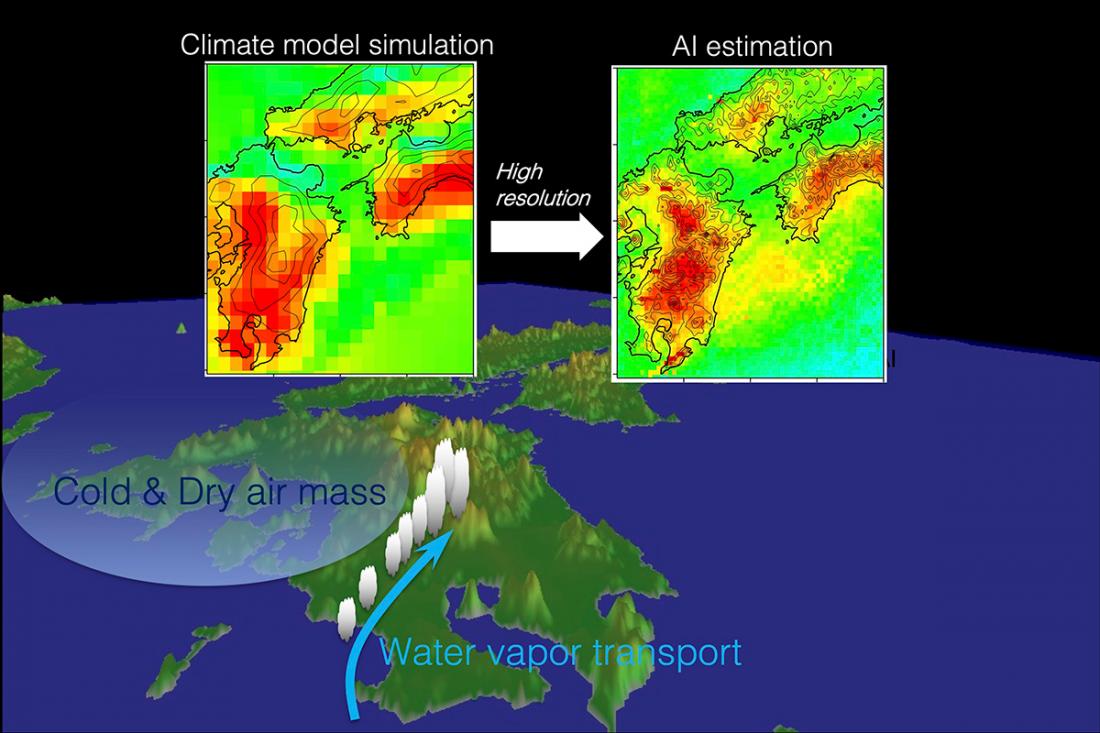Tokyo, Japan – Using machine learning, we developed a method to improve low-resolution climate model simulations to higher resolution. This method reproduces local precipitation characteristics and makes possible evaluation of the impact of recent global warming on local precipitation.
We developed a method based on machine learning that can estimate high-resolution precipitation characteristics from low-resolution climate model simulations. This method enables estimation of local precipitation characteristics that are difficult to address in current climate model simulation impact assessments.
Climatic characteristics of precipitation are strongly influenced by regional factors such as topography. Predicting the risks associated with both water-related disasters, such as floods and climate-related changes in water resources, requires accurate reproduction of local precipitation characteristics. However, long-term climate model simulations are essential for reproducing climate change using numerical models. Estimation of climate-related change in the characteristics of local precipitation is currently difficult because of the enormous computational resources required to run climate model simulations with high resolution.
We developed a method to obtain high-resolution precipitation products from low-resolution climate model simulations by applying a model bias correction method, which recognizes patterns in the relationship between regional spatial precipitation distribution characteristics and local precipitation amounts through machine learning. The high-resolution method was shown capable of reproducing the climatic characteristics of local precipitation (e.g., frequency, monthly precipitation amount, and rainfall intensity).
Furthermore, by analyzing high-resolution precipitation estimates from 3,000-year climate model simulations, the climate-related characteristics of precipitation variability during the recent rainy season were clarified. Comparison with observations revealed that the frequency and intensity of precipitation over the past 60 years have been highly influenced by natural variability rather than by global warming. To reduce the impact of serious water-related disasters, it is necessary to elucidate the mechanisms and characteristics of precipitation intensification caused not only by the effects of global warming but also by local factors such as topography and the interaction of various weather systems.
###
The article, “A downscaling and bias correction method for climate model ensemble simulations of local-scale hourly precipitation,” was published in Scientific Reports.
https://doi.org/10.1038/s41598-023-36489-3
About Institute of Industrial Sciene, The University of Tokyo
The Institute of Industrial Science, The University of Tokyo (UTokyo-IIS) is one of the largest university-attached research institutes in Japan. UTokyo-IIS is comprised of over 120 research laboratories—each headed by a faculty member—and has over 1,200 members (approximately 400 staff and 800 students) actively engaged in education and research. Its activities cover almost all areas of engineering. Since its foundation in 1949, UTokyo-IIS has worked to bridge the huge gaps that exist between academic disciplines and real-world applications.



